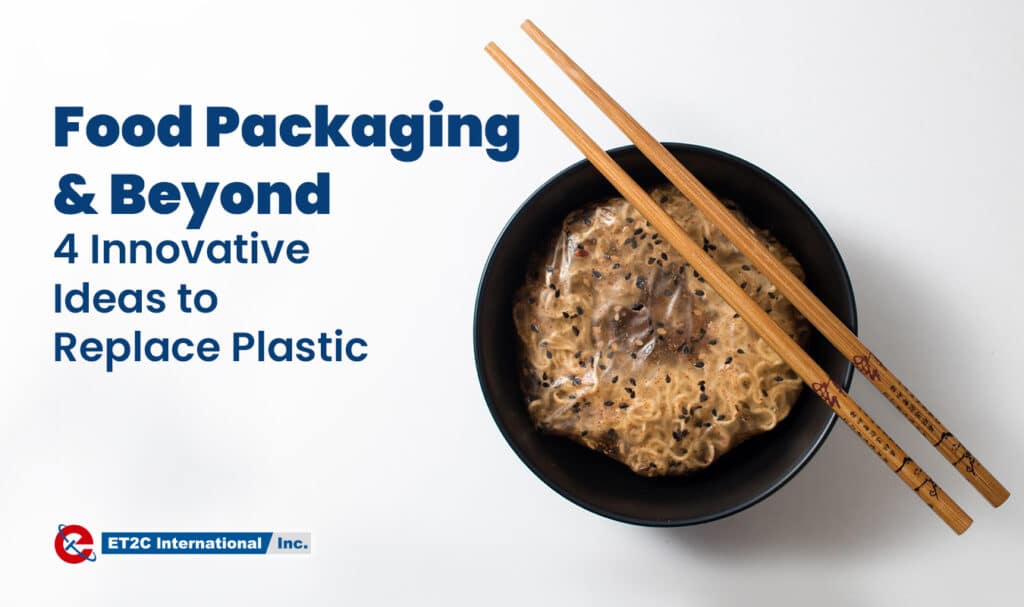
Packaging is a hot topic nowadays and food packaging is a key part of this. Considering that over the past ten years, we have produced more plastic than during the whole of the last century. There is therefore growing concern at a consumer level of its usage in food packaging and the potential impact on foods.
Is Plastic Bad for Food Packaging?
As a general point, plastic is an amazingly durable and flexible material that offers many advantages. For this reason, it is certainly difficult to replace it with alternatives. For the food industry, plastic protects food, guarding it against pressure, humidity, light, and the bacteria that accelerate rot.
Given how we live, the food we expect and the distances produce has to often travel to get to us, plastic has become an essential part of the Food industry. Often this is for single-use purposes and this is part of the issue with plastics; its end-use. Ironically, a product that is intended to be used only once (such as the majority of food packaging) is made of compounds that will last a hundred lifetimes.
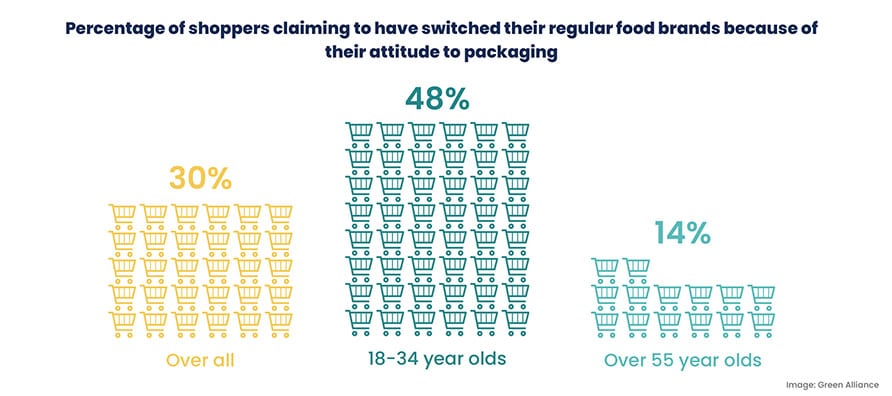
Sustainable Packaging: opportunities in a new market
Green consumers are making consumption choices amongst an ever-growing selection of ‘green products’, which extends beyond the product itself. This would include food packaging. In particular, consumers, with the support of Governments in many markets, are losing their tolerance for packaging that is not easily recyclable or have other properties that lessen its impact on the environment.
What are, therefore, some sustainable alternatives to plastic packaging?
1.Bioplastics
(Excuse the technical terminology in advance !).
These plastics contain some ingredients from renewable biological sources, such as vegetable fats, plant starches and wood fibres. We can list them into two main categories:
A. PLA (polylactic acids)
Currently, the cheapest bioplastic on the market, commonly found in food packaging. It is a form of polyester made by fermenting ingredients like corn starch or sugar cane.
B. PHA (polyhydroxyalkanoates)
This is a form of polyester created and stored by bacteria when fermenting sugar or fats. Compared to PLA, it can withstand higher temperatures.
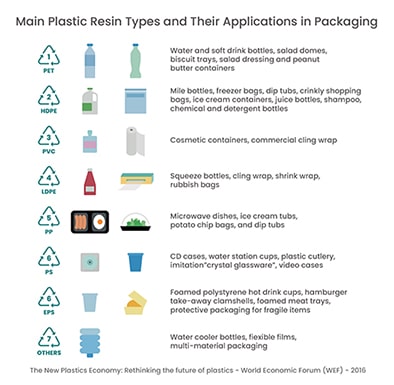
Pros and Cons of Bioplastics
Creating bioplastics requires less energy than more conventional plastics. This means that a substance like PLA, for example, produces less carbon dioxide during its production. In addition, some bioplastics use less water during production compared with conventional choices and generate fewer greenhouse gases when they biodegrade in the landfill. An important point to note is that biodegradable plastics often require certain conditions and it, therefore, requires Government-backed incentives that provide specific managed sites for the biodegrading process to be effective.
Under these right conditions, microorganisms can convert biodegradable bioplastics into water and carbon dioxide in a few weeks. But many biodegradable products may still contain conventional plastic, making them more difficult to break down.
Classification of Bioplastics.
According to their particular proprieties, bioplastics can be classified into the following categories:
• Non-biodegradable bioplastics (BIO-PET, BIO-PE, PA)
Although made from natural materials like sugar cane, they are chemically identical to some petroleum-based plastics.
• Partially biodegradable or “durable” bioplastics
Microorganisms can break these down into smaller pieces of plastic under the right conditions. However, this process generally takes longer than 3-6 months.
• Biodegradable bioplastics
They can break down into carbon and water due to the work of microorganisms. However, they are not compostable.
• Compostable plastics
Most of these plastics need industrial facilities to fully decompose.
2. Dissolving Packaging
Designers are working on new forms of food packaging to replace the unsustainable designs. Some new ephemeral alternatives to plastic, for example, can actually dissolve. This type of packaging covers a wide range: bowls made of mushrooms, cups fashioned from seaweed, and detergent-style pods for food.
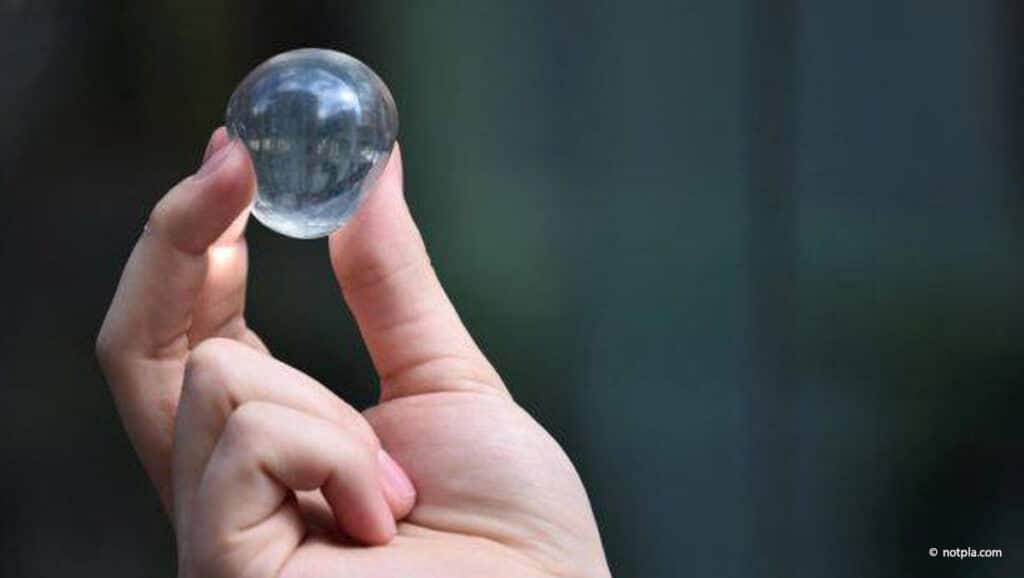
Packaging that disappears is now an emerging market and definitely a trend. The water-soluble bags made from food-grade ingredients for pre-portioned oatmeal or rice are more and more frequently used. Moreover, innovative solutions that might seem bizarre but are definitely succeeding in merging functionality and sustainability. Imagine an oil bottle made from caramelized sugar, coated with wax, that cracks open like an egg. Or a smoothie container made from seaweed that will wither at the same rate as its contents, and a peelable beeswax package for rice or other dry goods.
Definitely, innovation is not the complete solution to the problem of plastic waste, but it is a critical start.
3. Edible Packaging
Let’s face it: plastic is hard to beat for packaging: it is cheap, light, and versatile and has excellent mechanical properties. However, there is broad concern about the plastic waste in food packaging and this is too often visible in the common items that end up as litter and pollution in our rivers and oceans.
Wrappers, straws, cutlery, bottles have been rethought to become a sustainable alternative to classic (polluting) options.
A new brilliant trend to replace these items with sustainable alternatives is edible food packaging.
Some companies and academic researchers are trying carbohydrates from sources other than seaweed and other groups are working with proteins (even milk protein casein to make transparent films).
Pros and Cons of Edible Food Packaging
Customers might not like the idea of eating something that usually they throw away. However, edible packaging comes from renewable sources and even if it isn’t something people actually want to eat, it would still be biodegradable, disappearing much faster than single-use plastics or even compostable bioplastics.
Another aspect worth considering is that packaging generally keeps the food from bacteria and harmful substances. Therefore, eating a food’s wrapper raises potential hygiene concerns.
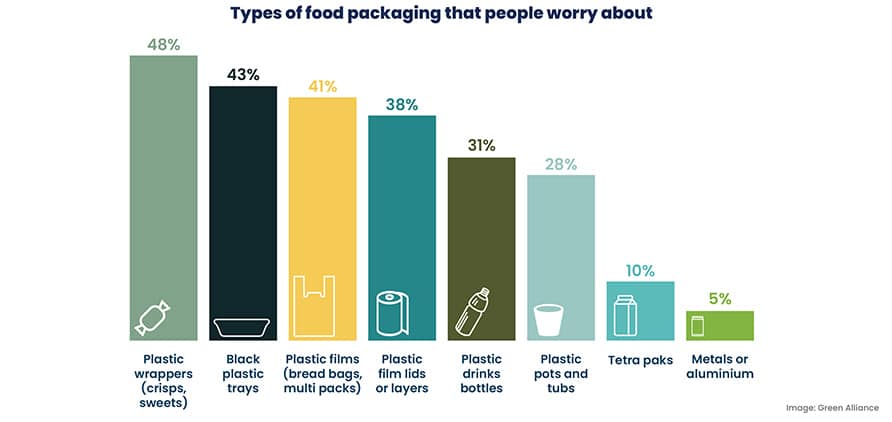
4. No Packaging
Sometimes, the best solution is no packaging at all and in some cases, we can definitely avoid packaging.
Let’s think about nature, which does edible packaging pretty well! Apple and grape skins protect the fruit from microbes and the environment. Humans have also been making consumable packaging for decades: sausage casings made of collagen and cellulose, and ice cream cones for example.
Changes in the way we buy, consume, and dispose of packaging is important as well. We can therefore opt for plenty of sustainable choices in our everyday life. For example, you can bring your own refillable drink bottle instead of buying disposable, single-use plastic bottles. Likewise, you can use your own reusable bag when shopping. Another option is to buy products that have no or less packaging or that can be refilled rather than those that are single-use.
Are you looking for sustainable food packaging?
At ET2C we care deeply about the environment and are doing what we can to understand more about the broader sustainable packaging market. Whether this is for food stuffs (particularly for our staff in our own offices) and single-use plastic, or packaging for other products, we are working hard to understand what is best suited to our clients. It is a complex environment that requires specific market, product and even segment knowledge to get both the right option at a consumer level but to also be relevant to the regulatory environment of a specific market. Wasting less and being mindful of the amount of materials used in packaging is a good start.
For all your queries, please contact us at contact@et2cint.com
Download the full infographic here.

